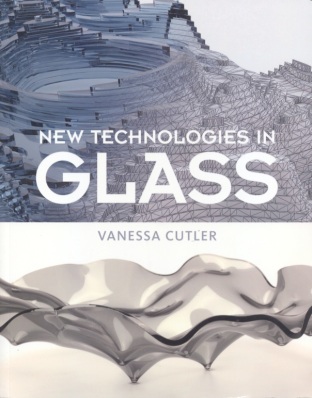 In her new book, Vanessa Cutler covers the benefits and costs of working with emerging technologies in the field of glass art.
In her new book, Vanessa Cutler covers the benefits and costs of working with emerging technologies in the field of glass art.
Back in 2009, the Hot Sheet covered Solheim Lab at the University of Washington’s ongoing experimentation with their vitraglyphic process. In the years since, an increasing number of artists have uprooted 3-D rendering processes previously conducted only in a factory context and incorporated them into their own work. In her forthcoming book New Technologies in Glass (A & C Black, 22.49 Pounds) Vanessa Cutler describes a diverse range of media whose rising use throughout the world of glass art parallels their increasing availability (albeit at a relatively still-high cost).
In this 128-page book available August 2012, Cutler is upfront about the level of difficulty that artists who are new to these tools will face. She prefaces the “Digital tools” chapter by saying that “artists sometimes find the different terminology used in glass machining confusing…engineering terms such as ‘nesting’ and orifice,’ rather than ‘placing’ and ‘aperture’ are part of the language of this technology, just as hand-drawing or hand-cutting terminology has always been part of the traditional studio language.” She moves between description of a program’s basic functions to its practical applications. She also makes mention of specific problems one might run into with certain programs, as well as the popularity of certain programs over others. Each program is described with inspiring clarity and simplicity, wisdom and forethought. N.B.s aplenty mention the subtler problems an artist might run into, such as the trickiness between using manual tracing versus Live Trace in Adobe Illustrator.
Subsequent chapters—which discuss water-jet cutting (Cutler’s primary medium), rapid prototyping, vinyl plotting, multi-axis machining, and laser cutting/engraving—follow a similar pattern. Each opens with a brief argument for what the technology being discussed is capable of (and why it is superior to its manual counterpart); each concludes with statements from artists who practice in each medium, respectively, a handful of sections on cost and accessibility, and, occasionally, predictions of how interface with these media might change in the future. Cutler also references other artists (via statements and vivid photos of their work), and either draws from her own experience or research with each medium (admittedly, it’s hard to tell the difference).
Much of the technology that Cutler writes about “has been available in different working spheres for years.” Water-jet machines, for instance, “have been used for everything from cutting tomatoes, titanium and chocolate bars to kidney surgery and weapon disassembly,” and “have been around since the 1970s…” And while it’s true that this technology has become more accessible over the years, there’s always the expense of experimentation (as well as some staggering initial costs—RhinoCAD, for instance, can run as high as $995.00). It behooves the reader, then, to apply for residencies or academic positions in order to access these tools; either would better facilitate experimentation and possibly not require a second mortgage.
The book can be pre-ordered from the publisher’s Website.
—Isabella Webbe


